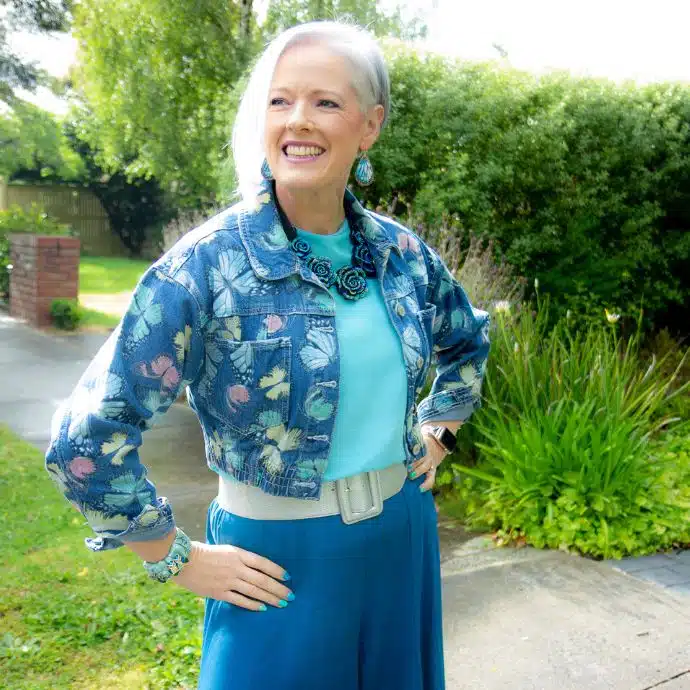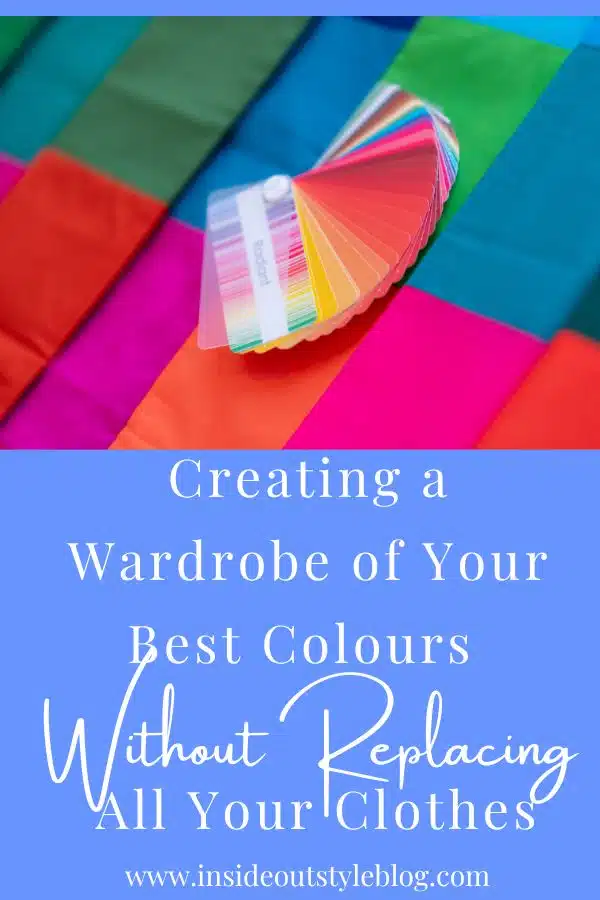If you don't know which colours flatter your complexion and then you get a colour analysis and discover that a heap of your clothes are not in the right colours, it can feel like an expensive exercise to replace everything.
But this doesn't have to be so as there are ways around this conundrum without having to spend a fortune and time and energy trying to find new clothes.
When it comes to creating a wardrobe, choosing the right colours is essential. Your ultimate colours will enhance your complexion, make you look younger, and accentuate your best features.
There are a few reasons why you might want to transition your wardrobe to a new palette. Firstly, as we age, our skin undergoes changes that affect its texture, elasticity, and colour. These changes, combined with shifts in hair and eye colour, can alter our overall colouring and impact which colours best complement our appearance.
Secondly, you may have had a radical hair colour change or gone grey and stopped dying it. Lastly, you may have a personal colour analysis that is incorrect or outdated. I can't tell you how many people I've seen over the years who have had multiple seasonal colour analysis' and been given a different season each time, all quite different from each other. Or maybe you've never had a colour analysis before and have a mish-mash of different colours existing in your wardrobe.
If you've noticed that your colouring has changed, and the colours that used to look great on you no longer do, it's time to adjust your wardrobe.
Don't Throw Out Your Wardrobe
Can your clothes be revamped with dye? I've seen whole wardrobes refreshed, renewed and in a perfect palette for my clients with dye. And even black items are given a new lease on life after having been put through a bath of dye remover before being redyed into a new flattering colour.
Before you dye, consider these questions about each garment:
- Do you love the garment style?
- Does it fit well?
- Is it still in good condition?
- Do you wear it regularly?
- Is it still in fashion?
If the answer to these questions is YES then it's absolutely worth dying the garment.
If the answer is no, then it may be worth letting the garment go and looking for a replacement in a much better colour and style.
There is no point in throwing out perfectly good garments that you love and wear because they are the wrong colour as this is often easily fixed.

This tuquoise top was originally a very pale green, it was OK, but not great, so I overdyed it a signature turquoise colour and now it works so much better in my wardrobe.
Overdyeing From Warm to Cool or Cool to Warm
If you have a lot of warm-colored clothing that you love, but you're ready to transition to cooler tones, you can experiment with dyeing. Dyeing is a cost-effective approach to revamping your wardrobe while retaining what you already own. Bernadette, my dying specialist, has written several informative posts on the subject.
Before you start dyeing, make sure to choose the right dye for your fabric. Different fabrics may require different types of dye and some fabrics are harder to dye than others (polyester is much harder to dye and requires boiling, whilst natural fibres are easy to dye, so it's important to read the label before you start. You'll also want to choose a dye that complements your skin tone. For instance, if you have a cool undertone, you may want to choose a blue or green dye to create a cooler hue. Adding yellow to cool colours can create a warmer hue, if you have stark white items and have warm colouring think about a little camel or yellow dye (or dye to signature eye colours) to really get more wear from your white items that are not really worn.
You may also want to test a small area of your clothing before dyeing the entire garment to make sure you're happy with the results (using a paper towel, similar coloured scrap of fabric or an inconspicuous area such as hem and side seams)
Plating Your Jewellery
Although jewellery is a minor aspect, you could consider having your gold jewellery rhodium plated to give it a silver appearance, or if your palette is warm, have it gold plated. This is a simple solution if you adore your gold pieces and prefer a different color.
The process of plating a piece of jewellery means coating it in an extremely thin layer of rhodium, only a few microns thick. Because this layer is so thin, it is easily subject to being worn off after exposure to excessive sweat; strong household cleaning chemicals including chlorine and excessive abrasion. Pieces like earrings that don't see much rubbing or abrasion will last longer than rings or bracelets.
How about other beads that are not made from metals? Well, you can revamp your jewellery using dye and nailpolish - I've got tips on changing the colour of your jewellery here.
Wearing Universal Colours
Additionally, it is important to identify the universal colors in your wardrobe, such as red and violet or teal, which are adaptable to both warm and cool tones. When replacing items, consider incorporating cooler shades and discard any items that do not work for you. You'll find there are cross-over colours in every palette that mean you may be able to keep wearing garments in these colours easily.
The universal colours are: teal and red-violet and true red and green.
The universal neutrals are taupe, marine navy and soft white.
The thing with universal colour and neutrals, they don't look terrible on anyone, but they may not be your most flattering colours either!
With these tips in mind, you can transform your style and feel confident in your new look.
Want to Discover Your Optimal Colour Palette?
Feeling confused or wishing you knew which were your best colours? Then get a personal colour analysis - it can be done in-person or online as a stand-alone service, or as part of my full image program 7 Steps to Style.
What I love about knowing my best colours, other than that they make me look my best, is that it makes it so easy to curate a cohesive wardrobe that's versatile with heaps of outfit options as everything mixes and matches because the colours naturally play well together and makes packing for travel so much easier as you naturally can create wardrobe capsules super quickly.
Find Out More
Understanding Undertone and Ageing - Warm to Cool
Warm vs Cool Grey Hair and How Going Grey May Change Your Wardrobe Choices
Universal Colours - How Universal Are They Really?



